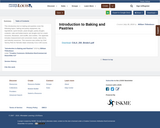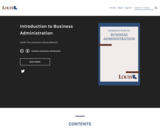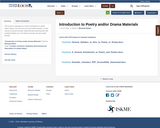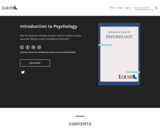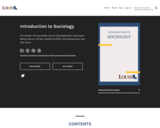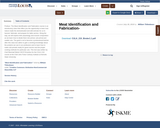Table of Contents:
Chapter 1: Sampling and Data
Introduction to Chapter 1: Sampling and Data
1.1 Definitions of Statistics, Probability, and Key Terms
1.2 Data, Sampling, and Variation in Data and Sampling
1.3 Frequency, Frequency Tables, and Levels of Measurement
1.4 Experimental Design and Ethics
Chapter 1 Review
Chapter 1 Practice
Chapter 1 Homework
Chapter 2: Descriptive Statistics
Introduction to Chapter 2: Descriptive Statistics
2.1 Stem-and-Leaf Graphs (Stemplots), Line Graphs, and Bar Graphs
2.2 Histograms, Frequency Polygons, and Time Series Graphs
2.3 Measures of the Location of the Data
2.4 Box Plots
2.5 Measures of the Center of the Data
2.6 Skewness and the Mean, Median, and Mode
2.7 Measures of the Spread of the Data
Chapter 2 Review
Chapter 2 Practice
Chapter 2 Homework
Chapter 3: Probability Topics
Introduction to Chapter 3: Probability Topics
3.1 Terminology
3.2 Independent and Mutually Exclusive Events
3.3 Two Basic Rules of Probability
3.4 Contingency Tables
3.5 Tree and Venn Diagrams
Chapter 3 Review
Chapter 3 Practice
Chapter 3 Homework
Chapter 4: Discrete Random Variables
Introduction to Chapter 4: Discrete Random Variables
4.1 Probability Distribution Function (PDF) for a Discrete Random Variable
4.2 Measures of General Discrete Random Variables
4.3 Binomial Distribution
4.4 Geometric Distribution
4.5 Hypergeometric Distribution
4.6 Poisson Distribution
Chapter 4 Review
Chapter 4 Practice
Chapter 4 Homework
Chapter 5: Continuous Random Variables
Introduction to Chapter 5: Continuous Random Variables
5.1 Continuous Probability Functions
5.2 The Uniform Distribution
5.3 The Exponential Distribution
Chapter 5 Review
Chapter 5 Practice
Chapter 5 Homework
Chapter 6: The Normal Distribution and The Central Limit Theorem
Introduction to Chapter 6a: The Normal Distribution
6.1 The Standard Normal Distribution
6.2 Using the Normal Distribution
Introduction to Chapter 6b: The Central Limit Theorem
6.3 The Central Limit Theorem for Sample Means (Averages)
6.4 The Central Limit Theorem for Sums
6.5 The Normal Approximation to the Binomial
Chapter 6 Review
Chapter 6 Practice
Chapter 6 Homework
Chapter 7: Confidence Intervals
Introduction to Chapter 7: Confidence Intervals
7.1 A Single Population Mean Using the Normal Distribution
7.2 A Single Population Mean using the Student t Distribution
7.3 A Population Proportion
Chapter 7 Review
Chapter 7 Practice
Chapter 7 Homework
Chapter 8: Hypothesis Testing with One Sample
Introduction to Chapter 8: Hypothesis Testing with One Sample
8.1 Null and Alternative Hypotheses
8.2 Outcomes and the Type I and Type II Errors
8.3 Distribution Needed for Hypothesis Testing
8.4 Rare Events, the Sample, Decision, and Conclusion
8.5 Additional Information and Full Hypothesis Test Examples
Chapter 8 Review
Chapter 8 Practice
Chapter 8 Homework
Chapter 9: Hypothesis Testing with Two Samples
Introduction to Chapter 9: Hypothesis Testing with Two Samples
9.1 Two Population Means with Unknown Standard Deviations
9.2 Two Population Means with Known Standard Deviations
9.3 Comparing Two Independent Population Proportions
9.4 Matched or Paired Samples
Chapter 9 Review
Chapter 9 Practice
Chapter 9 Homework
Chapter 10: Linear Regression and Correlation
Introduction to Chapter 10: Linear Regression and Correlation
10.1 Linear Equations
10.2 Scatter Plots
10.3 The Regression Equation
10.4 Testing the Significance of the Correlation Coefficient
10.5 Prediction
10.6 Outliers
Chapter 10 Review
Chapter 10 Homework
Chapter 10 Practice
Chapter 11: The Chi-Square Distribution
Introduction to Chapter 11: The Chi-Square Distribution
11.1 Facts About the Chi-Square Distribution
11.2 Goodness-of-Fit Test
11.3 Test of Independence
11.4 Test for Homogeneity
11.5 Comparison of the Chi-Square Tests
11.6 Test of a Single Variance
Chapter 11 Review
Chapter 11 Practice
Chapter 11 Homework
Class Group Activities/Projects
This textbook was created through Connecting the Pipeline: Libraries, OER, and Dual Enrollment from Secondary to Postsecondary, a $1.3 million project funded by LOUIS: The Louisiana Library Network and the Institute of Library and Museum Services. This project supports the extension of access to high-quality post-secondary opportunities to high school students across Louisiana and beyond by creating materials that can be adopted for dual enrollment environments. Dual enrollment is the opportunity for a student to be enrolled in high school and college at the same time.
The cohort-developed OER course materials are released under a license that permits their free use, reuse, modification and sharing with others. This includes a corresponding course available in Moodle and Canvas that can be imported to other platforms.

